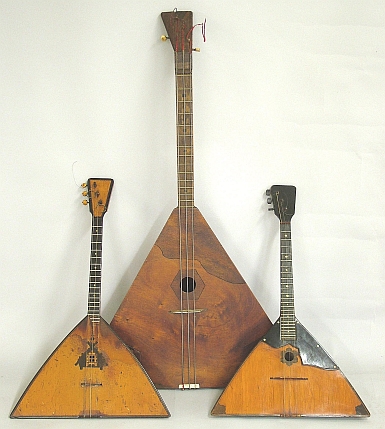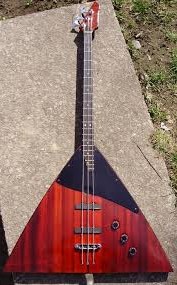|
What is a Balalaika The balalaika is a family of Russian stringed instruments with a characteristic triangular body and three strings. It includes instruments of various sizes, from the highest-pitched to the lowest: the piccolo, prima, secunda, alto, bass, and contrabass balalaikas. The prima balalaika is the most common. All have three-sided bodies; spruce, evergreen, or fir tops; and backs made of three to nine wooden sections (usually maple) though the Russian built one I repaired had a plastic body. The prima balalaika, secunda and alto are played either with the fingers or pick, depending on the music being played, and the bass and contrabass (equipped with extension legs that rest on the floor) are played with leather plectra. The rare piccolo instrument is usually played with a pick. The most common solo instrument is the prima, which is tuned E-E-A. Sometimes the balalaika is tuned "guitar style" by folk musicians to G-B-D (mimicking the three highest strings of the Russian guitar), whereby it is easier to play for Russian guitar players, although classically trained balalaika purists avoid this tuning. It can also be tuned to E-A-D, like its cousin, the domra, to make it easier for those trained on the domra to play the instrument, and still have a balalaika sound. The folk tuning D-F♯-A is also used, as this makes it easier to play certain riffs. Factory-made six-string prima balalaikas with three sets of double courses are also common and often use a "guitar" tuning. Although they are popular (particularly in Ukraine), they are generally considered to be inferior in quality to single course instruments. The piccolo, prima, and secunda balalaikas were originally strung with gut with the thinnest melody string made of stainless steel. Today, nylon strings are commonly used in place of gut. Tuning: E4, E4, A4 for Prima. A3, A3, D4 for the Secunda. E3,
E3, A3 for the Alto. E2, A2, D3 for the Bass. E1, A1, D2 for the
Contrabass. B4, E5, A5 for the rare piccolo.
|
||||||||||||||||||||||||||||||||||||||||||||||||||
| The balalaika in
action with an orchestra.... here
and a MUST WATCH balalaika video of a great player and collector... BIBS.. with tips on how to play.... here And useful Balalaika page.... here |
||||||||||||||||||||||||||||||||||||||||||||||||||
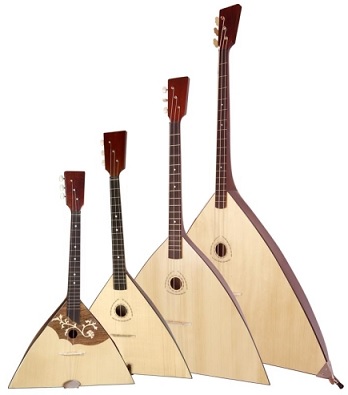 |
 |
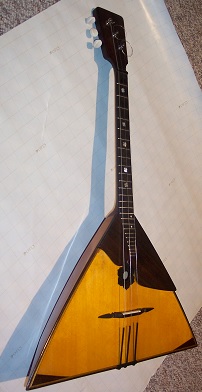 |
||||||||||||||||||||||||||||||||||||||||||||||||
|
|
|
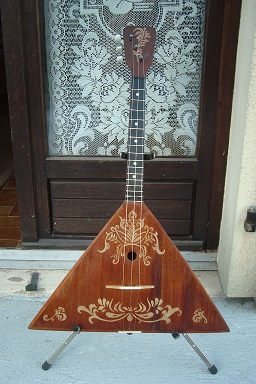 |
||||||||||||||||||||||||||||||||||||||||||||||||
